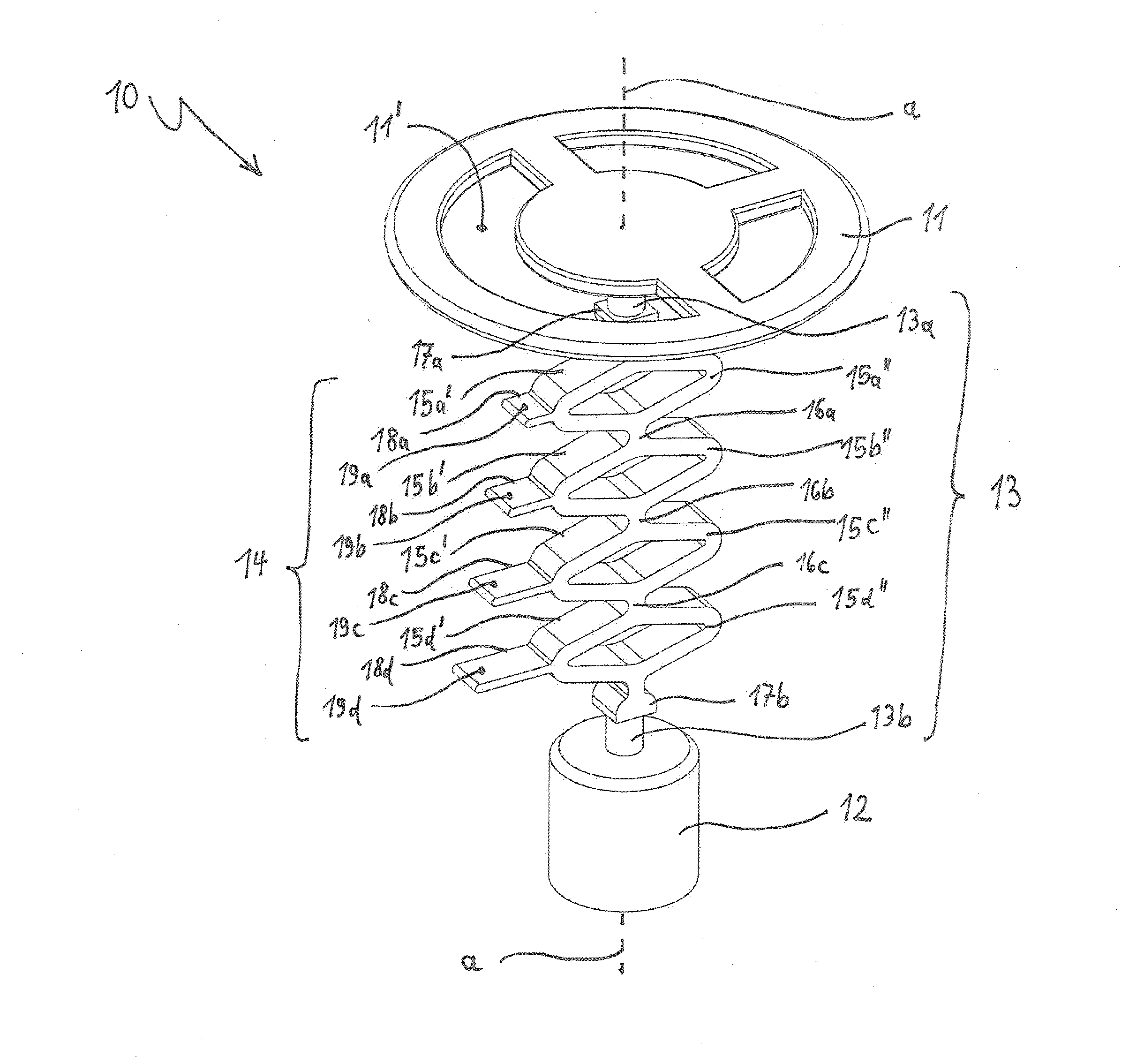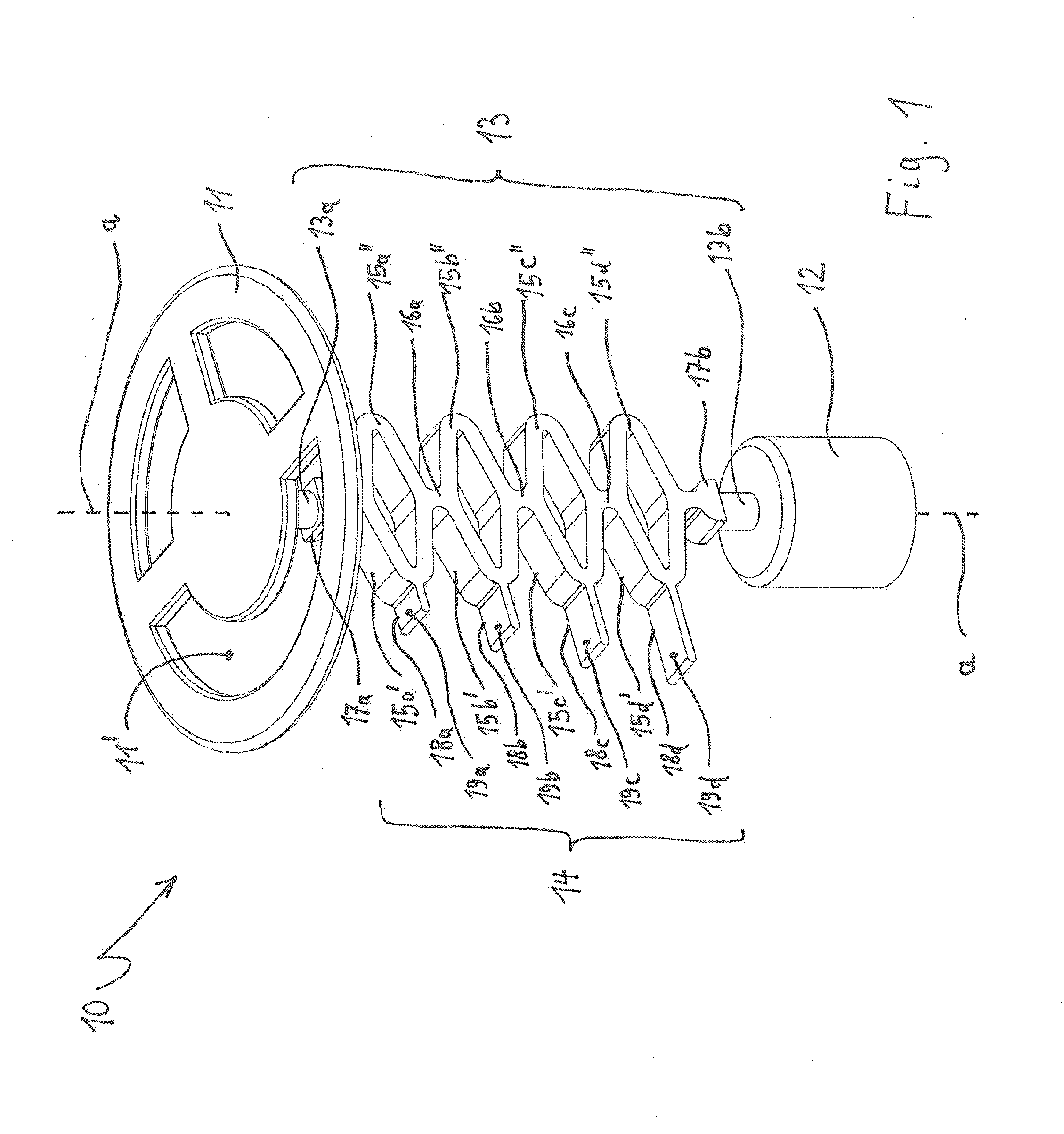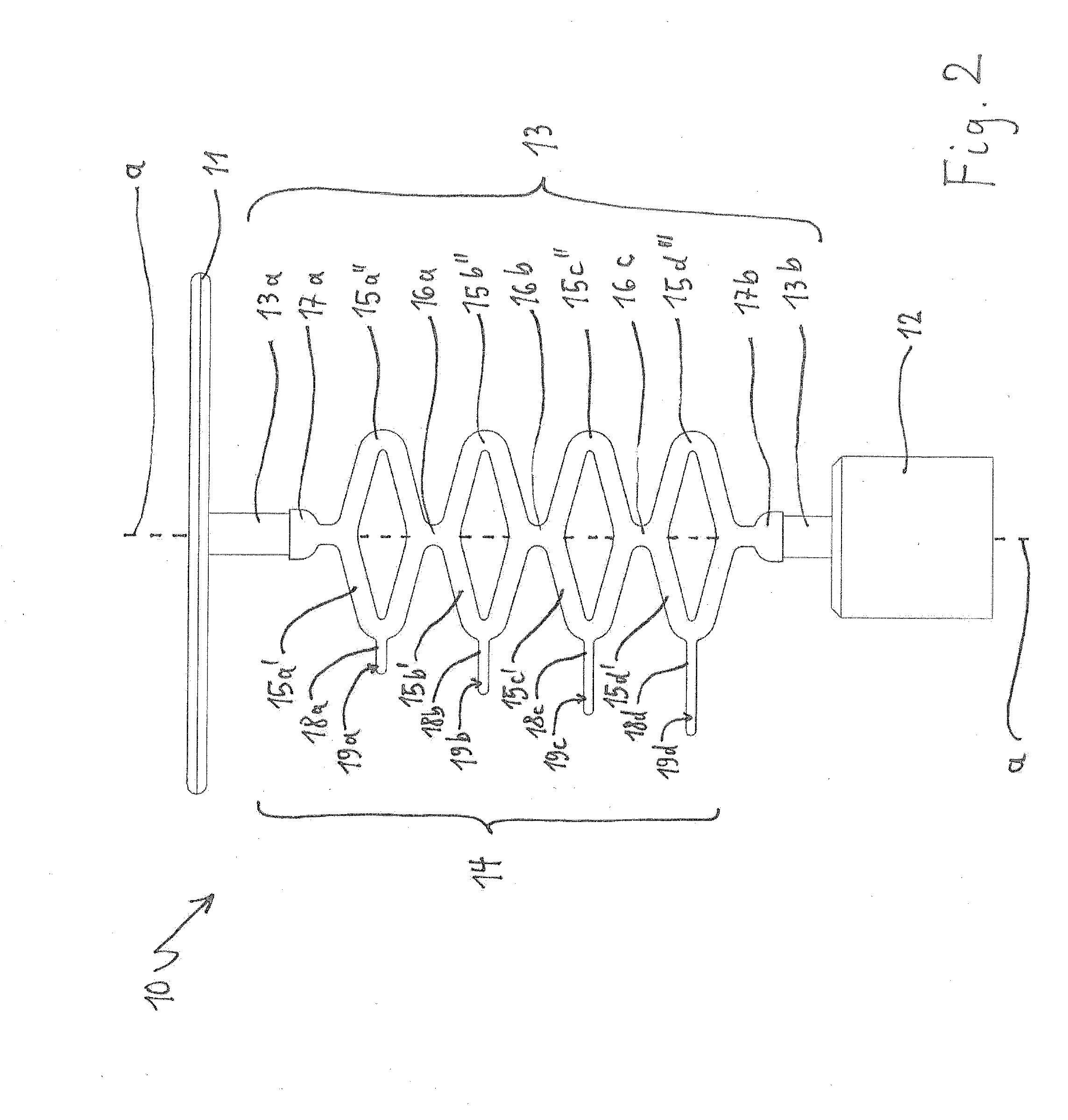In the case of the known ossicular prostheses (e.g., DE 10 2009 016 468 B3), sound conduction or
signal transmission between the tympanic membrane and the
inner ear is limited in many cases, because these known ossicular prostheses cannot not fully replace the natural anatomical formations of the
ossicular chain.
One major problem which arises in every case of reconstructing the human
ossicular chain involves selecting the correct length of
prosthesis.
WO 92 / 18066 A1 describes a self-adjusting, passive ossicular prosthesis which includes a spring mechanism, but which is complicated and very costly to manufacture, in the connection between the first and second fastening elements.
It is not possible, therefore, to attain a fixed, reproducibly exact length of the prosthesis even though the length is retained after the prosthesis has been surgically implanted in the
middle ear.
In addition, due to its very special mechanical and
geometric design, the known prosthesis requires a great deal of space in the
middle ear, thereby rendering it entirely unusable in many cases due to the unique features of a particular patient.
In addition, due to the design, a considerable amount of permanent pressure builds up between the two fastening points in the
middle ear after implantation, which does not exactly promote healing after
surgery and often eventually results in postsurgical complications.
Consequently, handling is complicated and relatively inaccurate, thereby rendering it challenging if not impossible to attain the desired exact
axial length of the ossicular prosthesis.
In addition, the result that is attained using this technique is not always reproducible, and, once the connecting element has been bent, it also is possible for the adjusted
axial length of the ossicular prosthesis to change because the connecting element springs back.
In the first case, it is not possible, however, to exactly adjust the fixing position and, therefore, the relative position of the two wire pieces, thereby making it challenging if not impossible to adjust the length of the prosthesis in an exact and reproducible manner.
In the second case, once the wire pieces have been inserted into the connecting
coupling, the relative positions of the wire pieces can tilt, flex, or become displaced, thereby likewise making it difficult or impossible to exactly adjust the axial length of the prosthesis.
Aside from the fact that an exactly reproducible adjustment of a desired axial length of the prosthesis is therefore not always guaranteed, the scope of application of this ossicular prosthesis is limited to
surgery of the stapes, in the case of which a direct connection to the
inner ear is attained via the
piston.
However, if a bell,
piston, clip, or flat shoe is used as the second fastening part, for connection to another part of the ossicular chain, then this known prosthesis is not
usable.
Another
disadvantage of this prosthesis is the fact that it does not include a defined shank as the connecting element between the two fastening elements and so the prosthesis can shift or flex transverse to the longitudinal axis of the prosthesis if
axial force is not introduced absolutely exactly.
It is therefore impossible to ensure that a length of the prosthesis will always remain exactly the same.
However, these advantages are attained by means of a relatively complicated,
mechanical design of the adjusting device in the connecting element of the prosthesis, a level of production outlay which is considerable by nature, and
resultant relatively high manufacturing costs.
 Login to View More
Login to View More  Login to View More
Login to View More 


